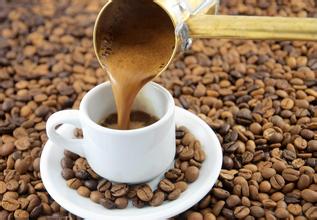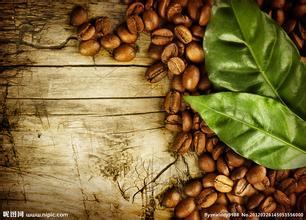Blue Mountain Coffee: black History
The Queen of England obtained a large number of wallenford Blue Mountain Coffee through diplomatic parcels. After tasting this slightly sour coffee, the Queen thought that this slightly sour coffee was the best coffee. From then on, Wallenford Blue Mountain Coffee was popular all over the world and became famous for a time. "Blue Mountain Coffee" also occupies the reputation of gourmet coffee by virtue of this "history" to this day.
History is history, after all, and it is estimated that only those who wrote the Royal "living Notes" will know whether the Queen of England really got the wallenford Blue Mountain Coffee. But judging from the production of Wallenford coffee, this story can only be a legend. Wallenford is the earliest coffee-growing estate in Jamaica. Because of its unique geographical advantages, the coffee produced here has large granules, good quality, strong mellow taste, and is recognized as the best coffee in the world, coupled with the slightly acidic soil. Its coffee taste is different from that of ordinary Arabka coffee, which is slightly sour, but it is precisely this sour taste that distinguishes Blue Mountain coffee from Ethiopian coffee. Wallenford is located in the Blue Mountains. British soldiers who once arrived in Jamaica saw the blue light shining over the mountain and shouted, "look, the blue mountain!" And get the name. In fact, the island of Jamaica is surrounded by the Caribbean Sea. On every sunny day, the sun shines on the sea, and the distant mountains are shrouded in a faint blue atmosphere because of the refraction of the azure sea. It's kind of mysterious.
In 1717 King Louis XV of France ordered coffee to be grown in Jamaica. According to the order of the King, a French naval officer introduced coffee seeds from Haiti in 1723 and gave them to Nicholas, Governor of Jamaica. Sir Nicholas Lawes, Arabica coffee began to be grown in the St. Andrew area. To this day, St. Andrews is still one of the three major producers of Jamaican Blue Mountain Coffee, with the other two producing areas: Portland (Portland) and St. Thomas (St.Thomas). In eight years, Jamaica exported more than 375 tons of pure coffee. In 1932, coffee production reached its peak and more than 15000 tons of coffee was harvested.
Wallenford Manor is located in the St. Andrews area, and its suitable elevation provides unique geographical conditions for the growth of coffee. However, Central America lies between the two largest oceans in the world, coupled with the influence of the Central Plains of the United States. The environment is so bad that the scale of coffee cultivation can not be expanded. Since 1960, the hurricane-hit Blue Mountain area of Jamaica has destroyed most of the estate facilities and coffee trees, and Wallenford Manor has not been spared. The pure Wallenford coffee has become history, and the once-famous Blue Mountain Coffee has almost disappeared. Therefore, in the legendary story above, the parcel received by the Queen of England can never be pure Wallenford coffee, because pure Wallenford coffee was no longer available at that time.
Because of Jamaica's independent advantage in coffee production, coffee cultivation continued to be promoted after the hurricane, which has become a competitive area for foreign investors. In the end, Japan gained the upper hand in this battle for foreign investment. Japan has always invested in the Jamaican coffee industry. Now most of the Blue Mountain Coffee is owned by the Japanese, and they have also won the preemptive right to buy Blue Mountain Coffee. In 1992, Jamaica sold 688 tons of Blue Mountain coffee to Japan, 75 tons to the United States and 59 tons to Britain. Now, 90% of Blue Mountain coffee is bought by the Japanese. Now, because the rest of the world can only get 10% of Blue Mountain, regardless of the price, Blue Mountain coffee is always in short supply.
With the spread of coffee culture, no country is willing to give up the huge economic profits brought by the name Blue Mountain. They are trying to get the right to operate Blue Mountain Coffee, with the exception of Japan. Coffee marketers around the world compete for only 10% of the remaining Blue Mountain Coffee places in the world. Some small coffee shops also put Blue Mountain Coffee in their own coffee shops, and the Blue Mountain Coffee here is not produced in the Blue Mountain Mountains, but is often a fake, mixing concentrated coffee beans according to the taste of Blue Mountain Coffee, trying to put together a little bit of the characteristics of Blue Mountain Coffee. This kind of coffee, which is more like a "chicken tail" coffee, is also sought after by consumers because of the name Blue Mountain.
There are three grades of coffee in the Blue Mountains: blue Mountain Coffee (Blue Mountain Coffee), Alpine Coffee (Jamaica High Mountasin Supreme Coffee Beans) and Jamaican Coffee (Jamaica Prime Coffee Beans). Among them, Blue Mountain Coffee and Alpine Coffee are each divided into two grades. In terms of quality, the order from top to bottom is: blue Mountain 1, Blue Mountain 2, Gaoshan 1, Gaoshan 2, Jamaican Coffee. Usually, coffee grown between 457m and 1524 m above sea level is called alpine coffee, and coffee grown between 274m and 457m above sea level is called Jamaican coffee, and only coffee grown in the blue mountain areas above 1800 m above sea level can be called Blue Mountain Coffee. The price of Blue Mountain coffee is several times higher than that of alpine coffee. It is mainly distributed in 5 peaks such as John Crow,St.John's Peak,Mossman's Peak,High Peak,Blue Mountian Peak. According to this division, the areas around the Blue Mountains also began to produce Blue Mountain Coffee under the name of Blue Mountains. Blue Mountain Coffee tastes best between 1800 meters and 2200 meters above sea level, so the real Blue Mountain Coffee is named after the coffee beans produced in this area. Coffee lovers who like Blue Mountain are even more demanding, insisting that coffee growing between 1850 and 1860 meters is Blue Mountain Coffee and enjoy tasting this height of coffee for a lifetime.
In any case, today's Blue Mountain Coffee occupies the reputation of aristocratic coffee. Blue Mountain Coffee has conquered the taste of the world with its quality, and its reputation has kept it at a good price so far, while coffee pursuers also insist on enjoying Blue Mountain exclusively in social situations.

Important Notice :
前街咖啡 FrontStreet Coffee has moved to new addredd:
FrontStreet Coffee Address: 315,Donghua East Road,GuangZhou
Tel:020 38364473
- Prev

A Summary of the Development History of Coffee in Yemen
Coffee scientific name: Coffea arabica), also known as coffee tree, Arabica coffee, etc., is the national flower of Yemen. Before the 6th century in the park, Yemen was called Arab, so the coffee trees transported from them to other places were also called Arabian coffee trees. The name coffee comes from the Arabic Qahwah, which means plant drink. Later, the coffee spread all over the world, and it was picked.
- Next

Introduction of Coffee Price and Flavor description method in Vietnam
This is the use of a modified Vietnamese pot to extract pure Vietnamese coffee beans by dripping. And the most important feature of Vietnamese coffee beans is baked with special cream, so there will be a strong tropical coffee wrapped with a strong creamy flavor. Drinking coffee is a daily habit of Vietnamese. Vietnamese cafes are very common, not high-spending places, and ordinary ones are only a few yuan RMB. Vietnam Coffee
Related
- Detailed explanation of Jadeite planting Land in Panamanian Jadeite Manor introduction to the grading system of Jadeite competitive bidding, Red bid, Green bid and Rose Summer
- Story of Coffee planting in Brenka region of Costa Rica Stonehenge Manor anaerobic heavy honey treatment of flavor mouth
- What's on the barrel of Blue Mountain Coffee beans?
- Can American coffee also pull flowers? How to use hot American style to pull out a good-looking pattern?
- Can you make a cold extract with coffee beans? What is the right proportion for cold-extracted coffee formula?
- Indonesian PWN Gold Mandrine Coffee Origin Features Flavor How to Chong? Mandolin coffee is American.
- A brief introduction to the flavor characteristics of Brazilian yellow bourbon coffee beans
- What is the effect of different water quality on the flavor of cold-extracted coffee? What kind of water is best for brewing coffee?
- Why do you think of Rose Summer whenever you mention Panamanian coffee?
- Introduction to the characteristics of authentic blue mountain coffee bean producing areas? What is the CIB Coffee Authority in Jamaica?

